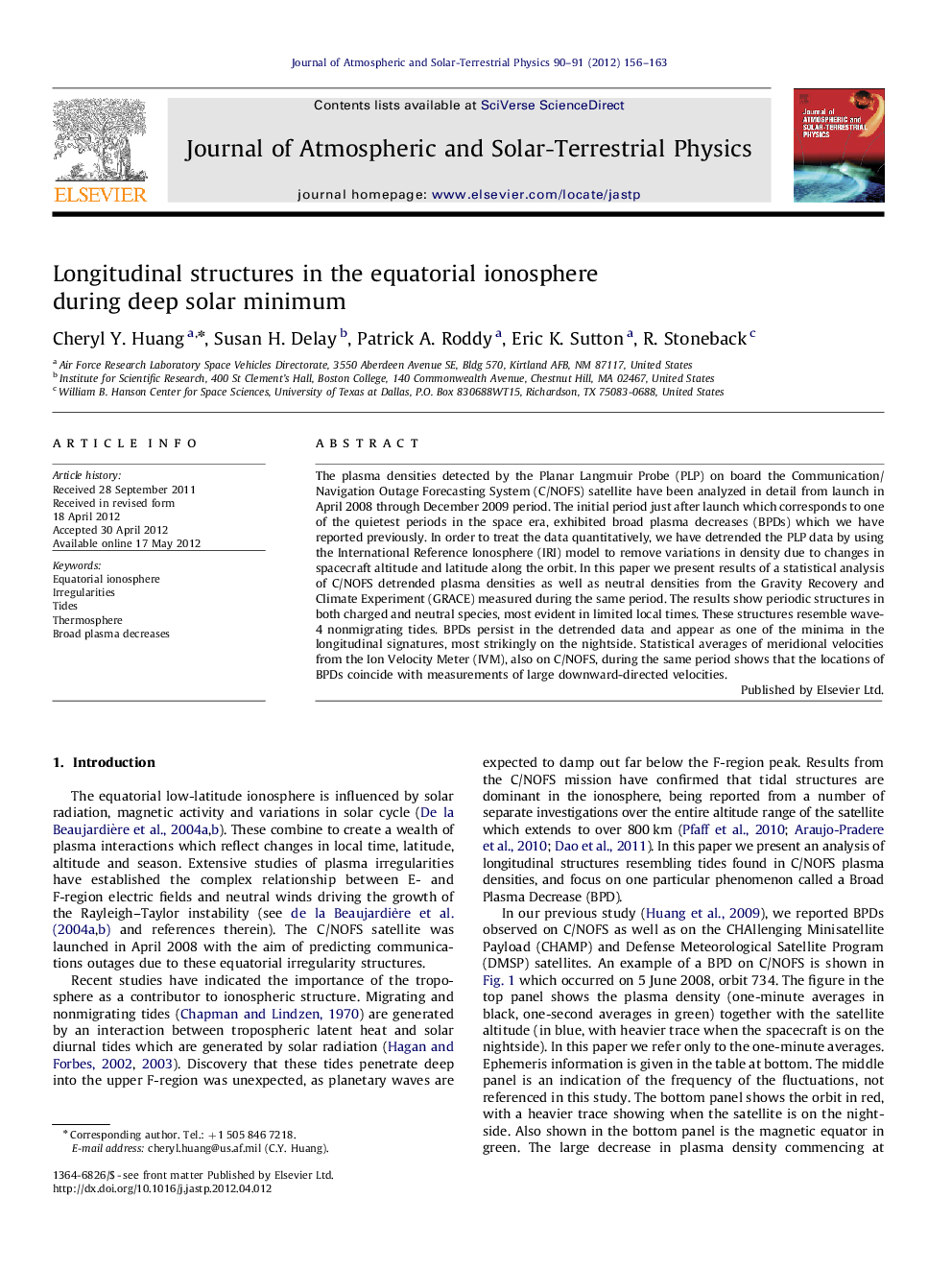| Article ID | Journal | Published Year | Pages | File Type |
|---|---|---|---|---|
| 1776816 | Journal of Atmospheric and Solar-Terrestrial Physics | 2012 | 8 Pages |
The plasma densities detected by the Planar Langmuir Probe (PLP) on board the Communication/Navigation Outage Forecasting System (C/NOFS) satellite have been analyzed in detail from launch in April 2008 through December 2009 period. The initial period just after launch which corresponds to one of the quietest periods in the space era, exhibited broad plasma decreases (BPDs) which we have reported previously. In order to treat the data quantitatively, we have detrended the PLP data by using the International Reference Ionosphere (IRI) model to remove variations in density due to changes in spacecraft altitude and latitude along the orbit. In this paper we present results of a statistical analysis of C/NOFS detrended plasma densities as well as neutral densities from the Gravity Recovery and Climate Experiment (GRACE) measured during the same period. The results show periodic structures in both charged and neutral species, most evident in limited local times. These structures resemble wave-4 nonmigrating tides. BPDs persist in the detrended data and appear as one of the minima in the longitudinal signatures, most strikingly on the nightside. Statistical averages of meridional velocities from the Ion Velocity Meter (IVM), also on C/NOFS, during the same period shows that the locations of BPDs coincide with measurements of large downward-directed velocities.
► Data from C/NOFS satellite in the equatorial ionosphere are analyzed. ► Neutral densities from GRACE satellite selected for C/NOFS coverage. ► Plasma densities and velocities show presence of 4-wave tidal structures. ► There are differences between neutral and plasma structures. ► Broad plasma decreases (BPDs) coincide with deep neutral density decreases.
